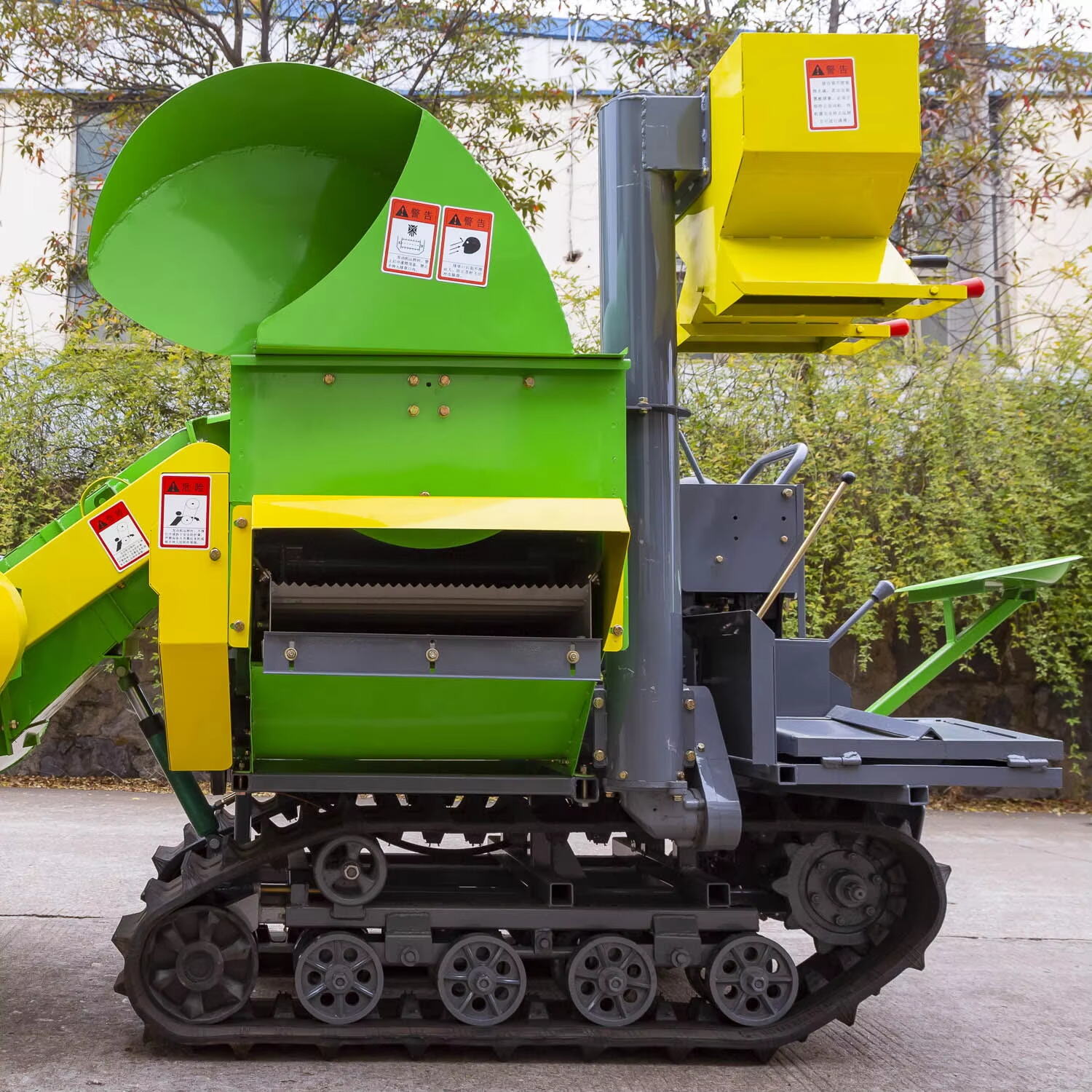Advancing Agricultural Productivity with Intelligent Harvesting Solutions
In recent years, agricultural practices have embraced technological innovation to meet the increasing demand for efficiency and sustainability. Among these innovations, the smart combine harvester has become a pivotal tool for modern farmers. These advanced machines integrate digital technology with traditional harvesting processes, delivering unmatched performance and precision. The combine harvester continues to evolve, and its smart iterations have revolutionized farming by enhancing productivity, reducing resource consumption, and simplifying operations.
Benefits of Smart Combine Harvesters for Farmers
Enhanced Operational Efficiency
Smart combine harvesters incorporate advanced sensors, GPS systems, and real-time data analytics to optimize harvesting operations. Unlike conventional combine harvesters, these machines can automatically adjust speed, cutting height, and threshing settings according to crop conditions. This precision reduces grain loss and maximizes yield efficiency, ensuring that farmers harvest the maximum amount of quality grain from their fields.
Farmers benefit from reduced downtime and more streamlined workflows. With automated guidance systems, smart combine harvesters can navigate fields with minimal human intervention, reducing operator fatigue and increasing operational hours during critical harvest periods. This efficiency is especially important during tight harvest windows, where timing directly impacts crop quality and financial outcomes.
Improved Data-Driven Decision Making
Smart combine harvesters provide farmers with detailed, real-time data on various aspects of the harvesting process. Information on crop yield, moisture content, and field conditions is collected and transmitted to farm management software, enabling informed decision-making. Farmers can analyze this data to identify trends, detect problem areas in fields, and plan future planting or fertilizing strategies more accurately.
The integration of data analytics with combine harvester performance enhances long-term farm productivity and sustainability. For example, precision agriculture tools allow farmers to allocate resources such as water and fertilizers more efficiently based on the harvested yield data, leading to cost savings and environmental benefits. This data-centric approach makes smart combine harvesters valuable beyond just the harvesting phase.

Technological Features of Modern Combine Harvesters
Advanced Navigation and Automation
The use of GPS and automated steering systems in smart combine harvesters reduces human error and improves harvesting precision. These technologies allow the combine harvester to follow optimal paths across the field, minimizing overlap and avoiding missed areas. Automated controls also help maintain consistent harvesting speeds and settings, which contribute to uniform grain quality and reduced waste.
Moreover, some smart combine harvesters feature obstacle detection and avoidance systems. These sensors enable the machine to safely navigate uneven terrain, avoid rocks or debris, and protect both the equipment and the crop. By combining safety features with operational efficiency, these harvesters enhance productivity and reduce costly downtime caused by accidents.
Integration with Farm Management Systems
Modern combine harvesters are designed to work seamlessly with digital farm management platforms. Through wireless connectivity, data collected by the combine harvester is uploaded to centralized systems that provide a comprehensive view of farm operations. This integration facilitates coordinated planning across planting, fertilizing, irrigation, and harvesting activities.
Farmers can remotely monitor combine harvester performance, track maintenance schedules, and receive alerts for potential issues. This proactive maintenance approach reduces breakdown risks during critical periods and extends the lifespan of the combine harvester. The smart combine harvester thus serves as a vital node within a broader ecosystem of precision farming technologies.
Economic Advantages of Using Smart Combine Harvesters
Cost Savings through Resource Optimization
The precision and automation features of smart combine harvesters contribute to significant cost reductions. By minimizing grain losses and optimizing fuel consumption, these machines help farmers maximize returns on their investment. The ability to adjust harvesting parameters dynamically ensures that the combine harvester operates under optimal conditions, reducing wear and tear and preventing inefficient operation.
Smart combine harvesters also enable better labor management. With automated guidance and data monitoring, fewer operators are needed to manage large fields, lowering labor costs and reducing the risk of human error. This operational efficiency is especially beneficial during peak harvesting seasons when labor shortages are common.
Return on Investment through Increased Yields
Investing in smart combine harvester technology translates into higher yields and better grain quality. The machine’s capability to adapt to varying crop and field conditions ensures more thorough harvesting, reducing unharvested grain left in the field. The real-time feedback mechanisms also allow immediate adjustments, minimizing damage to crops and improving overall output.
Higher yield quality leads to better market prices and improved profitability for farmers. Additionally, the data collected supports strategic decisions for future planting and crop management, further enhancing the farm’s productivity and financial sustainability over time.
Practical Considerations for Farmers Choosing Smart Combine Harvesters
Ease of Use and Operator Training
While smart combine harvesters come with sophisticated technology, manufacturers have focused on intuitive interfaces to make operation accessible. Touchscreen displays, automated controls, and real-time alerts guide operators through the harvesting process, reducing the learning curve. Training programs and digital support resources further assist farmers in maximizing the capabilities of their equipment.
User-friendly design minimizes errors and enhances operator confidence, which is essential when working under time-sensitive conditions. Farmers benefit from the combination of advanced technology and practical usability, ensuring that smart combine harvesters are a valuable asset on the farm.
Adaptability to Different Farming Environments
Smart combine harvesters are engineered to perform in diverse agricultural settings and crop types. Adjustable headers, customizable threshing settings, and adaptable residue management systems allow the machines to meet the specific needs of different crops such as wheat, corn, soybeans, and rice.
The technology embedded within these harvesters also enables operation on varying terrains and field conditions. Features such as terrain compensation and adjustable tire pressure ensure minimal soil compaction and efficient navigation. This versatility makes smart combine harvesters suitable for a wide range of farming operations, from small family farms to large commercial enterprises.
FAQ
What are the main benefits of smart combine harvesters compared to traditional models?
Smart combine harvesters improve operational efficiency through automation, reduce grain loss with precision adjustments, and provide real-time data for better farm management.
How does the integration with farm management systems benefit farmers?
Integration allows seamless data transfer, enabling comprehensive monitoring of farm operations, proactive maintenance, and informed decision-making across planting, fertilizing, and harvesting.
Are smart combine harvesters suitable for all types of crops?
Yes, they offer adjustable settings and attachments to accommodate a variety of crops, making them adaptable to different agricultural needs.
What kind of training is required to operate a smart combine harvester?
Most smart combine harvesters have user-friendly interfaces, and manufacturers provide training resources to help operators efficiently use the technology with minimal learning curve.
Table of Contents
- Advancing Agricultural Productivity with Intelligent Harvesting Solutions
- Benefits of Smart Combine Harvesters for Farmers
- Technological Features of Modern Combine Harvesters
- Economic Advantages of Using Smart Combine Harvesters
- Practical Considerations for Farmers Choosing Smart Combine Harvesters
- FAQ

